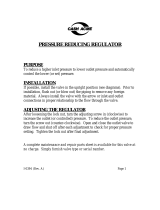
Water Circuit
The ice machine must have an adequate water
supply. Connect a water supply to the ice making
section and to the condensing unit case a water
cooled condenser is being used. Separate water
lines are recommended with hand shut-off valve
and water filter on individual line.
Remember:
– Maximum Water Temperature 35EC (95
o
F.)
– Minimum Water Temperature 5EC (40
o
F.)
– Minimum Water Pressure 1 atm (15 PSI)
– Maximum Water Pressure 5 atm (75 PSI)
MAR1400 requires 29 lt/hr (7.7 gallons/hour) of
constant water supply for ice making.
MAR2000 requires 42 lt/hr (11 gallons/hour) of
constant water supply for ice making.
For installation on fishing vessels, using seawater,
to carry sea water from sea chest to the
condensing unit and to evaporating unit through
appropriate strainers, you may use aluminum
brass pipes or PHE plastic pipes to avoid corrosion
problems.
Never use copper tubes with sea water.
ICE STORAGE BINS
The ice storage bin for a MAR unit must be
designed for use with the MAR. The ice chute
position and the physical size of the cabinet must
be accounted for. In some cases the MAR must be
positioned with its side panel to the front of the bin.
See sales literature for more information.
ICE STORAGE ROOM
Ice storage situations are of two kinds:
a) Short term storage
b) Extended term storage
The scale ice made by MAR machines is flat, dry
and subcooled, so there is some tendency for the
ice to stick together. To improve ice handling,
particular attention is required for proper ice
storage conditions. An insulated ice storage bin or
room is always required, then according to ice end
use application, this can be refrigerated or
non-refrigerated.
Also a weight volume ratio of 2,1 cubic meters per
1000 Kg of ice (30 lb per cubic foot) must be taken
into consideration for correct ice storage.
a) Non-refrigerated room for short term storage
Ice can be produced continuously for 24 Hours per
day, however the use period is generally for no
longer than 8 hours per day. Therefore storage
facilities should be provided for a minimum of 16
hours of production, or the amount required during
a peak use period. This means that every MAR ice
machine must be installed with a properly
insulated storage room which should have a
minimum capacity of 2/3 the daily ice production.
With a well insulated room and duly subcooled
scale ice, the limited losses of heat through the
walls of a properly designed room with adequate
arrangements are largely offset, and excess
melting will not occur. In most situations where
whole quantity of ice produced is being used on a
daily basis, it is not necessary to provide cooling
for the ice storage room.
b) Refrigerated room for extended storage and
long distance conveying
When scale ice is to be transported at a
considerable distance, such as aboard fishing
vessels, or in locations with normal ambient
temperatures conditions, or when used in industrial
plants where demand is intermittent, its subcooling
power must be preserved in the storage bin by a
proper cooling system keeping air temperature at a
pre-established and constant value. The ideal ice
storage room is the type with mechanically
refrigerated jacket space surrounding the ice bin.
Good practice calls for an ice storage capacity of
about two times the daily ice machines production
with an inside temperature of -6EC minimum
(20EF).
MAR1400 & MAR2000
December 2000
Page 11






















